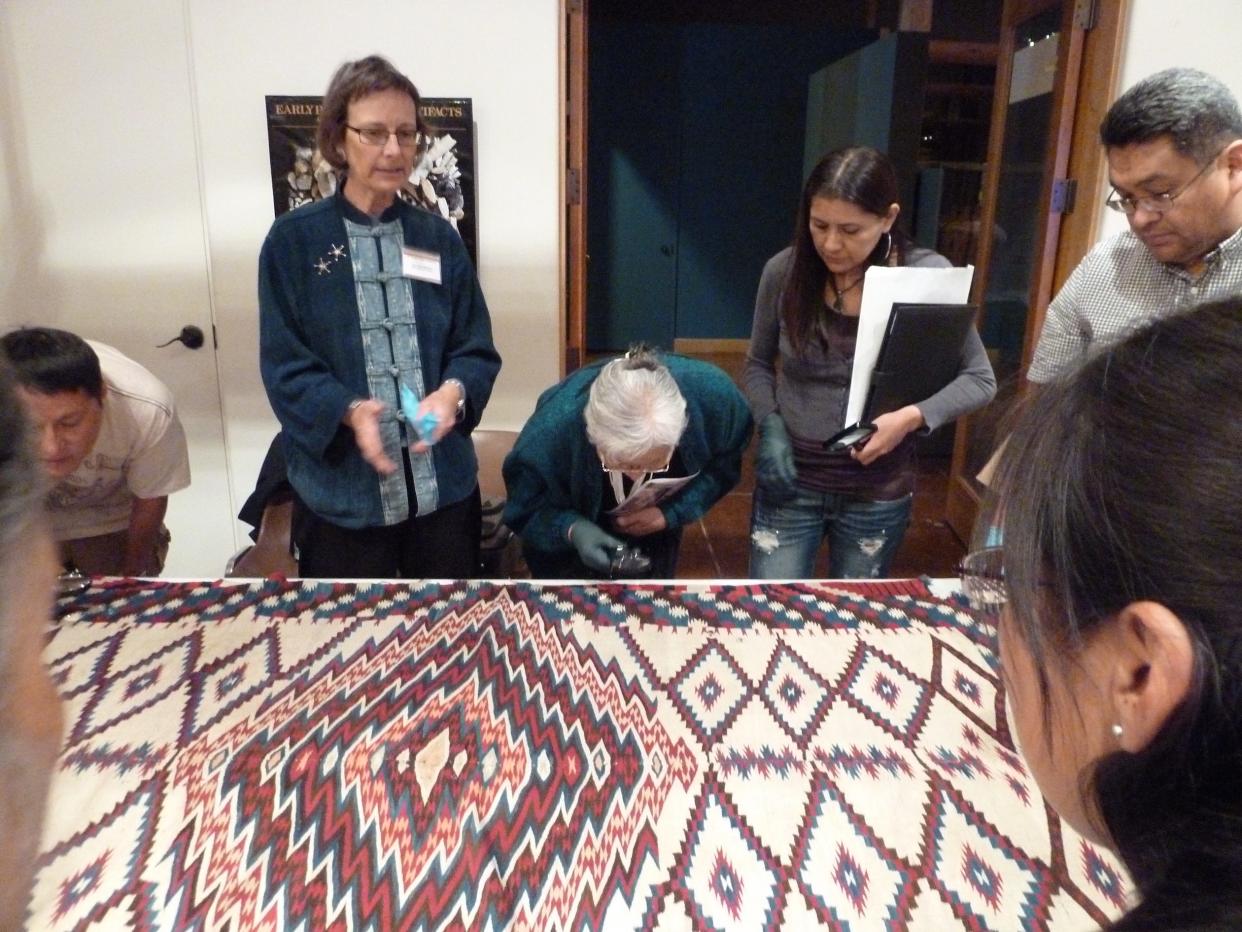WILL course to explore Navajo textile history

SILVER CITY — Ann Hedlund weaves the history of textiles in the American Southwest in the same way tradition, adaptation, innovation and variability is woven into the textiles she adores. Hedlund is one of the top experts in the field and The Western Institute for Lifelong Learning is pleased to present her course “Exploring Navajo Textile History” this spring.
In “Exploring Navajo Textile History,” in two sessions, "Understanding 19th Century Navajo Blankets" and "Know Your 20th Century Navajo Rugs," WILL members can explore Navajo weavers' creativity, their influences and outlooks. Over time, Navajo weavers have developed different community, family, and individual handwoven styles, Hedlund said.
Using examples from many American museums, the designs, techniques, and materials used to create historic Navajo wearing blankets and later transitional textiles will be explored. Hedlund said participants will learn about the development of 20th century regional rug styles and the rise of Navajo weaving to a recognized, hang-on-the-wall, contemporary art form. Each session will include illustrated Power Point presentations and group discussions. Two short articles will be required reading in advance of each session; a reading list and online resources will be provided for future reference.
In a third session, a number of participants selected from the previous sessions will be invited to show one or two textiles from their own collections for show and tell, group commentary, and further identification, Hedlund said.
Tom Hester, a member of the Western Institute for Lifelong Learning curriculum committee, said that because of Hedlund’s expertise, this is one of WILL’s most popular courses. “I think shining through all her work in museums, university and research has been Ann's abiding and deep respect for the Navajo people,” Hester said.
Hedlund, PhD, is a cultural anthropologist who focuses her ethnographic field-based research on living artists and the varied sources of their creativity. In video made by the Arizona State Museum Jan. 12. “Investigating and caring for blankets and rugs,” Hedlund explained where her deep respect for Navajo people originated.
“I was working in translation with the Diné language. I was visiting many families, I was taking part in lots of activities. I worked for the Navajo Museum, met more weavers, wrote a dissertation and a bunch of articles during the 1970s and 80s. My theme throughout as I began to assess what was I learning from Navajo weavers … and especially their sense of self-determination in producing the work that they did — that led to my museum career.
“This led to the first ever exhibitions and symposiums that brought several dozen Navajo weavers together. No one had ever brought weavers together to speak for themselves and stand up for their own work,” she said in the video.
She served as a curator of ethnology and professor of anthropology at the Arizona State Museum, where she also directed the Gloria F. Ross Center for Tapestry Studies, from 1997 to 2013. She curated exhibitions and consulted with museums such as the Denver Art Museum, Heard Museum in Phoenix, DeYoung Museum of San Francisco, Smithsonian Institution, Textile Museum of Washington and others. Her books include “Navajo Weavers of the American Southwest” and “Navajo Weaving in the Late Twentieth Century” plus many catalogue and journal articles. She compiled and edited Joe Ben Wheat’s prize winning volume, “Blanket Weaving in the Southwest.”
Retired since 2013, she lives in the downtown area of Silver City, where she continues to write and conduct collaborative projects.
The class is offered in three sessions on Zoom: 3:30 to 5 p.m. Tuesdays, Feb. 8, 15, Wednesday, Feb. 16. There are still spots available. Courses for WILL members for the spring semester were posted on the WILL website courses page Dec. 10, and registration began Dec. 17 and is continuing. Go to the website's Membership page to learn how to join WILL. There are 100 total spaces available for the Zoom course “Exploring Navajo Textile History.”
For information or to sign up for the course go to https://will.community/#/
Barry Heifner writes for the Western Institute for Lifelong Learning and can be reached at publicity@will.community
This article originally appeared on Silver City Sun-News: WILL course to explore Navajo textile history

